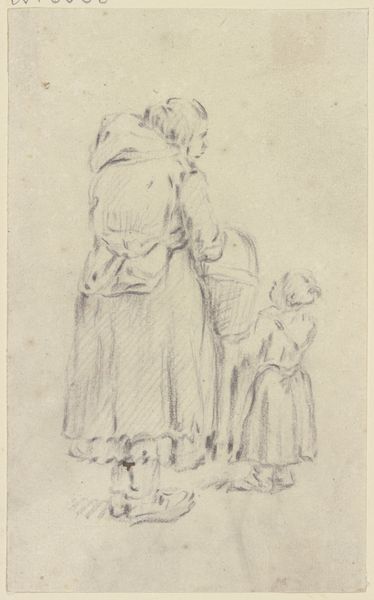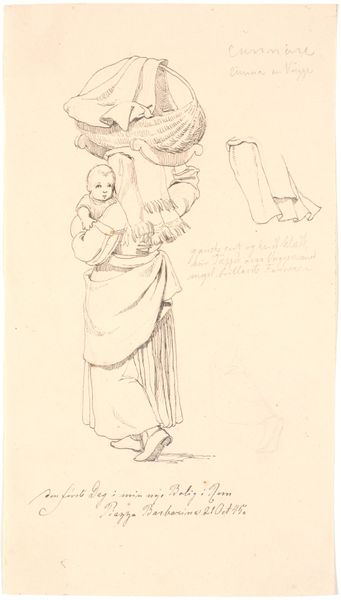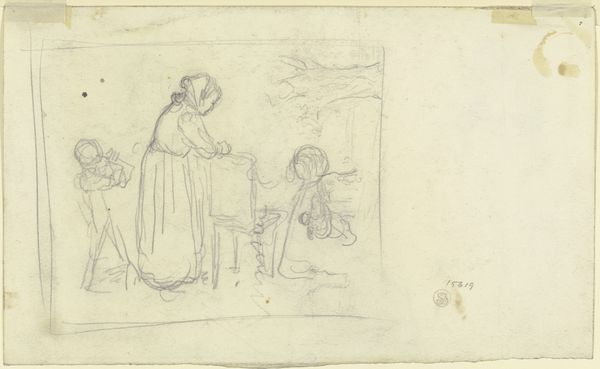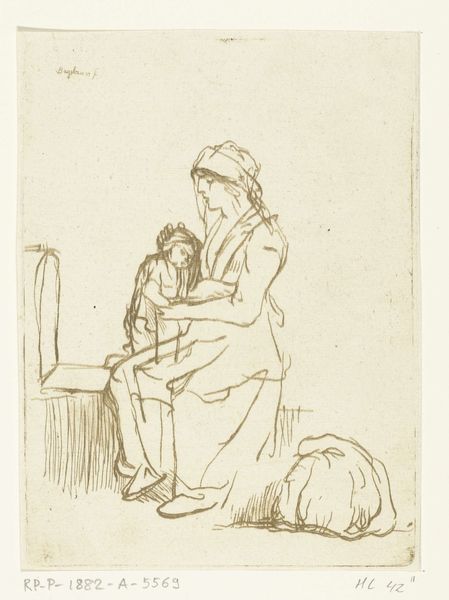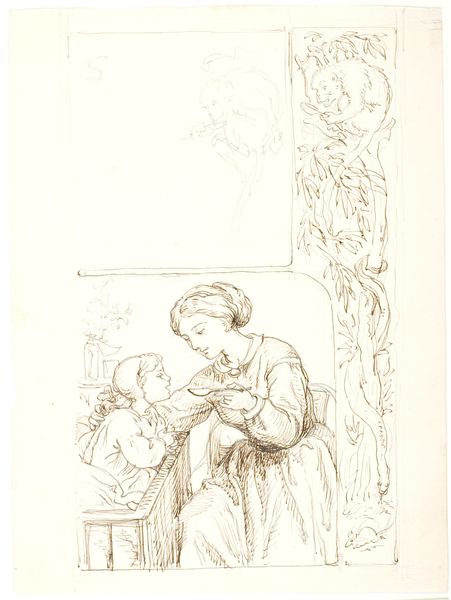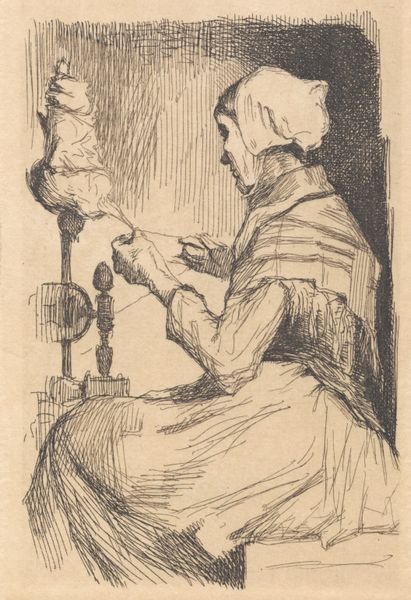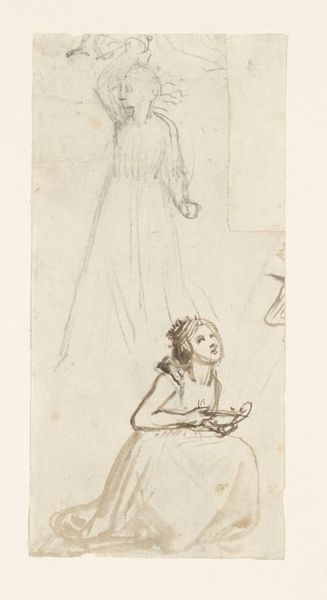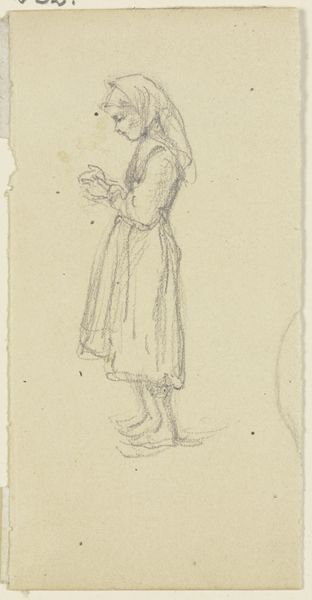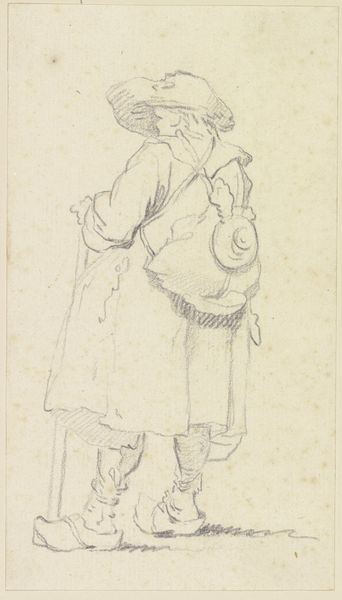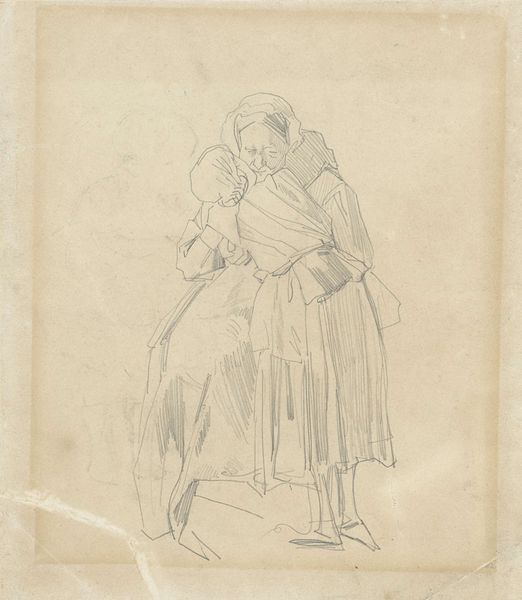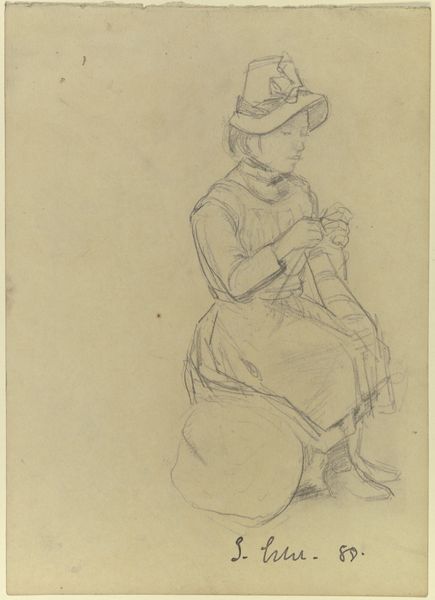
Bondekone, som leder sit barn i en sele, øverst en løs blyants-skitse af en kvinde set bagfra 1846
0:00
0:00
drawing, pencil
#
portrait
#
drawing
#
romanticism
#
pencil
#
genre-painting
Dimensions: 205 mm (height) x 123 mm (width) (bladmaal)
Curator: This is a pencil drawing titled "Bondekone, som leder sit barn i en sele, øverst en løs blyants-skitse af en kvinde set bagfra," or "Peasant Woman Leading Her Child in a Harness, with a Loose Pencil Sketch of a Woman Seen From Behind," created by Johan Thomas Lundbye in 1846. Editor: There's such a vulnerability to the drawing. The thin pencil lines give a fleeting, almost ethereal quality. The subject seems both burdened and serene. Curator: Absolutely. Lundbye, working in the Danish Golden Age, was keenly interested in representing rural life, but through a Romantic lens. Notice how the means of production, that pencil, and its immediacy translate directly to an apparent realism. The labor behind this image becomes nearly transparent, contrasting with more academic methods prevalent then. Editor: It's fascinating to consider this through a feminist lens. The image depicts a mother’s labor, quite literally pulling her child along. The sketch highlights her movement, her role. But is she empowered, or simply burdened by societal expectations of motherhood and agricultural life? How much agency did these women truly have? Curator: Those questions are crucial to understanding this piece! Consider too the role of paper. This was a study, not a finished canvas. Paper was increasingly available, part of broader industrial and consumer changes, and lends an accessibility to his exploration of labor and motherhood that grander materials wouldn't. Editor: Right, and looking closer, the implied social commentary can’t be ignored. While romanticized, the child’s harness hints at constraints on both mother and child within their social station. Even their clothing subtly underscores that difference from the bourgeoisie. Curator: Precisely. We can almost feel the rough texture of their garments conveyed through the varying weight of Lundbye’s pencil strokes. It serves to create both a tender scene, and, more implicitly, asks the viewer to reflect upon labor and materials in the world outside of the drawing. Editor: Ultimately, Lundbye provides a quiet commentary on 19th-century Danish society. A glimpse into the lives of those whose stories are often unheard or misrepresented in the art of the period. Curator: And, with an emphasis on material culture we start to see the world surrounding this scene coming into clearer view, even at a distance.
Comments
No comments
Be the first to comment and join the conversation on the ultimate creative platform.
